Art reveals secrets about Earth’s past atmosphere
25 March 2014
When artists paint landscapes most of them try to capture what they see as best they can, including the colours of the clouds and the skies. Christos Zerefos and his team of Greek and German researchers and a Greek painter have recently found that the colours of sunsets painted by artists as far back as 1500 can actually tell us how polluted the atmosphere was in the past! For instance, when volcanoes erupt they spew lots of polluting gas and ash into the atmosphere, making it more hazy. This effect can cause sunsets to appear more orange and red for several years, because of the way the volcanic particles scatter sunlight. A similar effect occurs when the air is polluted with dust from deserts, or from man-made industrial processes (eg. coal-fired power stations). Christos and his team looked at hundreds of photographs of old paintings from the years 1500 to 2000, a period during which there were around 50 large volcanic eruptions across the world. They found that sunsets painted shortly after a volcanic eruption tended to show more red colours rather than green, indicating a more polluted atmosphere. By analysing many of these old works of art, the team found a relationship between the paintings’ sunset colours and the amount of polluting particles in the past atmosphere, with more red indicating higher levels of pollution. This research can help other scientists make models of the past climate, as volcanic eruptions and man-made pollution can heavily influence the Earth’s atmosphere. In turn, this can help scientists predict how our atmosphere and our climate will change in the future.Find out more
How do volcanic eruptions and pollution affect climate?
When volcanoes erupt, they spew lots of ash and gas into the atmosphere. Some of the gas condenses to form tiny solid and liquid particles (less than a millimetre in diameter) that can reflect sunlight in all directions. During eruptions the skies quickly fill with these sunlight-reflecting particles, making the atmosphere hazier. Usually this happens in the vicinity of volcanos, but if the eruption is large enough, the effect can be seen around the globe! With less sunlight reaching the Earth’s surface, these regions get less warmth from the Sun, causing them to cool.
Sunlight is a mix of the seven colours of the rainbow: red, orange, yellow, green, blue, indigo and violet. At sunset, the distance that light from the Sun has to travel through the Earth’s atmosphere is at a maximum. Through reflections with particles in the atmosphere, this sunlight loses lots of its blue, indigo and violet colours, leaving the red, orange and yellow colours to reach our eyes. The particles from volcanic eruptions are even better at stopping blue colours from reaching us, and turn the sky even more red.
Manmade pollution also causes lots of tiny particles to be released into the atmosphere: if you go into some cities like Beijing in China the air is hazy with these tiny particles. These manmade, polluting particles can affect the atmosphere in a similar way to volcanic particles.
Print version
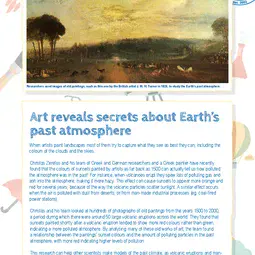
This is a kids' version of the EGU article: 'Art reveals secrets about Earth’s past atmosphere'. It was written by Jane Robb and reviewed for scientific content by Sam Illingworth and Kirsty Pringle, and for educational content by Phil Smith.
Translations
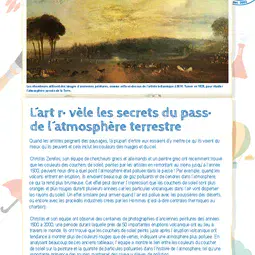
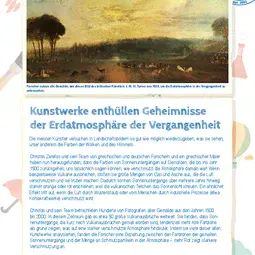
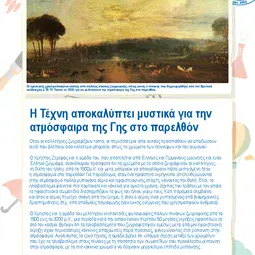
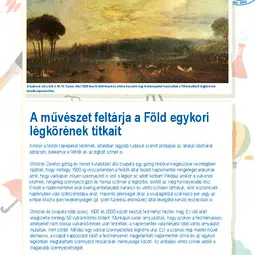
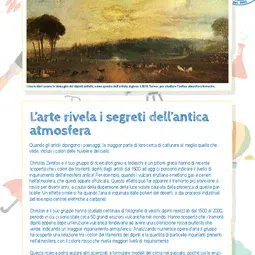
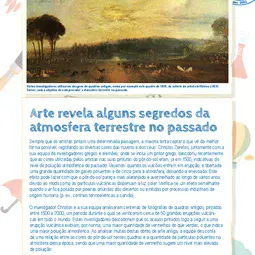
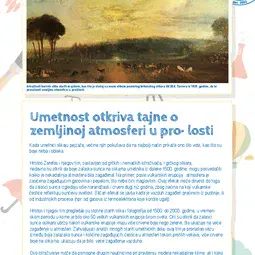
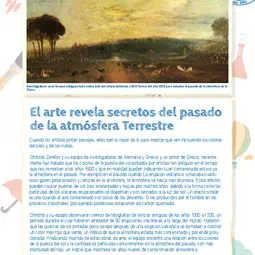
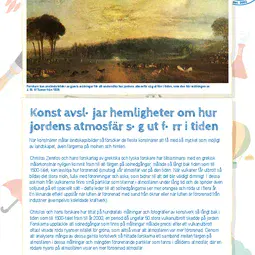
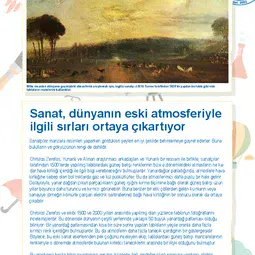
All English-language Planet Press releases are carefully edited, reviewed and proofed, by scientists, educators and EGU staff. Please note that once translated, Planet Press releases receive no further checks from EGU staff. For this reason, we cannot guarantee their accuracy, though we trust the quality of our voluntary translators and are grateful for their work.

